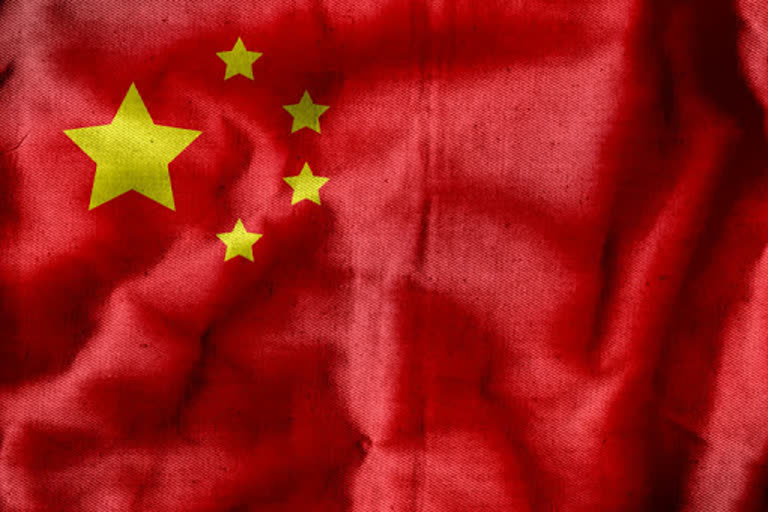New Delhi: The Republic of China is facing unprecedented criticism over its policies in various spheres. Flagrant violation of human rights in Hong Kong, Tibet and Xinjiang, expansionist designs in the South China Sea, trade issues with major nations, mishandling the information about the spread of Coronavirus, much-hyped BRI (Border Road Initiative), intrusion attempts at Indian borders and lately meddling in the internal affairs of Nepal and last, but not the least, the debt trap diplomacy has alienated China from the majority of the nations.
The phrase “Debt Trap Diplomacy” was coined by the noted Geo- strategist and author Brahma Chelani to describe China’s policies related to extending debt to African nations for developmental projects but is now being used for Chinese loans world over. It means the style and conditions of loan granted by China through which it acquires valuable stakes in the debtor nations and gradually starts interfering in their affairs for its own interests.
How does it work? Typically China offers readily available loans mainly to the LIDC (Low-Income Developing Countries) who desperately need funds for their developmental projects but are not able to get the same from the international financial institutions due to strict norms of project execution, repayment and transparency.
Many of these LIDCs, therefore, prefer foreign companies to bring in funds too. Here enter the Chinese companies. Flush with the funds from the manufacturing and export-based economy that China has, the government, banks and private financiers of China provide funds to the companies bidding for projects with the interest rate some time as high as 6% as against 3-4% charged by the international bodies like IMF, World Bank etc. And then the real sordid game begins.
The creditor- Chinese company, bank or private financiers as the case may be- asks for collaterals which might be in form of land, mining concessions, hydrocarbons or trade preferences, varying from country to country. The fund- bringing Chinese company quotes unusually high cost for the project but, since it brings much-needed funding and usually greases the palms of the local leaders, it bags the contract without the fair business practice of open and transparent tendering process.
Besides, other important conditions tied with the funding are to give contract to a Chinese company, involve Chinese equipment, Chinese project management and, in many cases, Chinese labour. Thus, a sizable chunk of the project cost, which is already very high, goes back to the contractor. If the borrowing nation fails to pay the loan or instalment thereof in time, the collateral is seized.
The whole operation smacks of the typical money lender of the Indian villages. Some analysts contend that China usually is not involved in such dubious dealings. However, the very opaque nature of the contracts, frequent increases in the cost, mid-way abandonment of projects by the contractors and confiscation of collaterals-all point towards China’s ulterior motive.
According to a study in the Howard University, so far China has extended loans to 152 nations to the tune of $1.5 Trillion (almost half of India’s GDP). But according to the Kiel Institute of World Economy, if we include the portfolio debts purchased by China from developed nations and trade credits extended to various partners, cumulatively it comes to about $5 trillion (6 % of the world economy)!
These loans are either part of much-hyped Chinese BRI (Belt and Road Initiative) or are on individual basis. The extent of tentacles of debt trap is manifest in the fact at present, in twelve countries, Chinese debt is more than 20% of their GDP. They are Djibouti, Tonga, Republic of Congo, Kyrgyzstan, Maldives, Cambodia, Niger, Laos, Zambia, Samoa, Mongolia and Vanuatu.
Under the pressure, Djibouti allowed China to establish there the first Chinese military base abroad and Sri Lanka had to lease the Hambantota port, constructed with Chinese loan, to China for 99 years as Sri Lanka could not pay the instalment of the loan of US$ 1 billion approx. In oil-rich Angola, which is repaying the Chinese loan of UD $ 43 billion through oil, China constructed a whole new city next to the capital Luanda but not a single soul lives there! Tanzania, Malaysia and even Pakistan had to stop some of the project midway for fear of inability to repay the loan.
For one of the projects in Malaysia, 90% cost was paid from the loan but not even 15% of the work was done compelling the Government of Mahathir Mohammed to scrap the project. In Pakistan, the cost of CPEC projects, originally envisaged at US$36 billion, had gone up to $ 64 billion and is likely to reach $ 80 billion. It is alleged that a bribe of $2.5 billion was paid by Chinese companies to grab the projects.
If our neighbour Nepal doesn’t stop romancing with China for loans, it will soon end up having a debt of approx. $ 8 billion, a sure trap, signs of which have already started showing. Many debtors have started feeling the pinch of the trap and trying to look elsewhere for future loans.
Where does India stand in shadow of this devious Chinese plan? We are present in many developing countries through our grants, lines of credit, assistance etc. Though we cannot match the scale and speed of Chinese loan, we certainly enjoy much higher goodwill than China does.
Though like China, Indian economy has also taken a hit from the pandemic, we can turn this crisis into an opportunity if, cashing on the brewing dissatisfaction against China, we could somehow manage to forward some soft loans to the seekers. This will enable us to reap a good dividend in the long run.
Also Read: Article 370 abrogation led to confusion? Not all Ladakhis are happy



